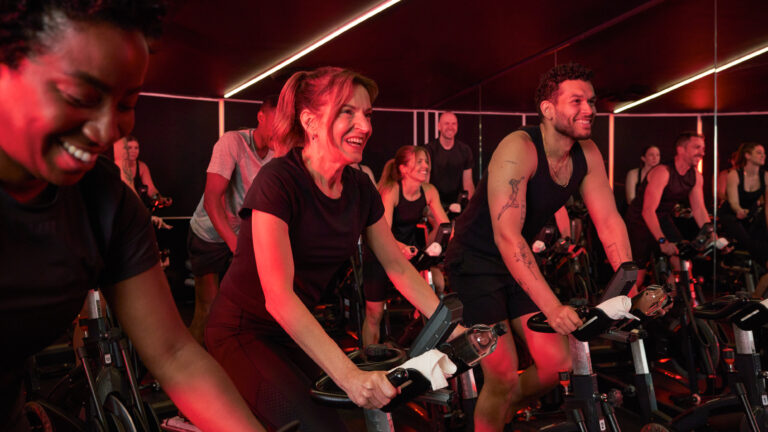In Singapore’s fast-paced fitness landscape, the demand for effective and efficient workouts is at an all-time high. Among the many options available, an indoor spin class stands out as a top choice for those looking to combine cardiovascular fitness, strength building, and calorie burning—all in a single session. However, simply pedalling hard is not the secret to maximising results. Understanding and training within specific heart rate zones can revolutionise your indoor cycling experience, helping you achieve goals faster and more safely.
What Are Heart Rate Zones and Why Do They Matter?
Heart rate zones refer to specific ranges of beats per minute (BPM) that correspond to different intensity levels during exercise. Each zone engages your body’s energy systems differently, leading to various training outcomes, from fat burning to cardiovascular endurance to peak performance.
Training with awareness of these zones ensures that you are not merely working harder, but working smarter. It prevents overtraining, reduces injury risks, and improves recovery. Instead of guessing if you are doing enough, heart rate monitoring provides real-time feedback that allows you to adjust your effort to match your goals.
The Five Heart Rate Zones Explained
Understanding the five primary heart rate zones is key to tailoring your indoor spin classes to your specific objectives. Here’s a breakdown:
- Zone 1: Recovery (50–60% of maximum heart rate)
This is the easiest zone, ideal for warm-ups, cool-downs, and recovery rides. It promotes blood circulation without taxing the body. - Zone 2: Fat Burning (60–70%)
Often called the “endurance zone,” this is where your body primarily burns fat for fuel. It is ideal for longer, steady-state rides. - Zone 3: Aerobic (70–80%)
This zone boosts cardiovascular capacity and overall stamina. It improves your body’s ability to transport oxygen and builds a solid aerobic base. - Zone 4: Anaerobic Threshold (80–90%)
Training in this zone enhances your lactate threshold, meaning you can sustain high-intensity efforts longer before fatigue sets in. - Zone 5: Max Effort (90–100%)
This is an all-out effort zone, usually sustained only for very short bursts. It improves speed and power but requires significant recovery.
Knowing which zone you are training in during an indoor spin class allows you to control the intensity for desired outcomes, whether it’s fat loss, endurance, or performance enhancement.
How to Calculate Your Heart Rate Zones
Before you can start training by heart rate, you need to determine your estimated maximum heart rate (MHR). A simple method is:
MHR = 220 – your age
Once you have your MHR, you can calculate each zone based on the percentage ranges. For example, if you are 30 years old:
- MHR = 190 BPM
- Zone 2 (Fat Burning) = 114–133 BPM (60–70% of 190)
Many modern spin bikes are equipped with heart rate monitors or can connect to external chest straps or smartwatches to track your heart rate during a session.
Training Smarter in an Indoor Spin Class Using Heart Rate Zones
When attending an indoor spin class, understanding heart rate zones allows you to participate with greater intention. Here’s how you can optimise your class based on heart rate training principles:
- Warm Up in Zone 1
Start every session with at least 5–10 minutes in Zone 1. Gentle pedalling at low resistance prepares your muscles, increases blood flow, and mentally transitions you into workout mode. Skipping a proper warm-up often leads to injuries and underperformance.
- Choose Your Primary Training Zone Based on Your Goal
- For Fat Loss: Spend most of the class in Zone 2. It is a misconception that high-intensity efforts are always better for fat burning; in fact, Zone 2 riding is highly efficient at promoting fat metabolism over time.
- For Endurance: Focus on Zone 3 during longer intervals. Holding a steady pace in this zone improves aerobic capacity without pushing you into fatigue too early.
- For Strength and Speed: Incorporate Zone 4 and short bursts into Zone 5 during hill climbs or sprint intervals.
Customising your indoor cycling according to your goal ensures more efficient training, helping you avoid unnecessary fatigue or slow progress.
- Plan Intervals and Recovery Strategically
An effective spin session often incorporates intervals that push you into higher heart rate zones, followed by recoveries that allow you to drop back into lower zones. This pattern trains your heart to recover faster—a key indicator of fitness.
For instance:
- 2 minutes in Zone 4 (high-intensity climb)
- 1 minute in Zone 2 (active recovery)
- Repeat
By cycling between high and moderate intensity, you can train both your anaerobic and aerobic systems simultaneously.
- Listen to Your Body Beyond the Numbers
While heart rate monitoring is incredibly useful, it’s essential not to become entirely reliant on the data. Factors like stress, sleep, hydration, and even Singapore’s humid climate can influence heart rate variability.
Develop a keen sense of perceived exertion (how hard you feel you are working) and use it alongside heart rate data. Over time, you’ll naturally become more attuned to your body’s signals during an indoor spin class.
The Importance of Recovery and Heart Rate Variability
Monitoring your heart rate outside of spin classes is equally important. If your resting heart rate is significantly elevated one morning, it could indicate incomplete recovery, illness, or excessive stress. In such cases, opting for a lighter ride or skipping training can prevent overtraining and injury.
Heart Rate Variability (HRV)—the variation in time between each heartbeat—is another valuable metric. A higher HRV generally indicates better recovery and readiness to train hard, while a lower HRV suggests the need for rest.
Incorporating these metrics into your training philosophy encourages a more holistic, health-first approach to fitness.
Equipment to Enhance Heart Rate Training in Spin Classes
To maximise heart rate training benefits, investing in reliable equipment can make a significant difference:
- Chest Strap Monitors: Generally more accurate than wrist-based devices, especially during intense rides.
- Smart Watches: Offer convenience and additional health metrics.
- Spin Bikes with Bluetooth Integration: Modern bikes that sync with apps allow real-time monitoring and post-session analysis.
If you are training at a facility like TFX, make sure to enquire about heart rate-compatible bikes or whether the studio supports wearables during classes.
Mental Shifts: Seeing Progress Beyond Calories Burned
One of the biggest mental shifts when using heart rate zones in indoor cycling is learning to focus less on the number of calories burned during a single session and more on overall cardiovascular improvements and fitness gains over time.
By tracking improvements in:
- Recovery time between intervals
- Ability to stay longer in higher heart rate zones
- Lower resting heart rate
- Increased HRV
you will start to see progress that truly reflects enhanced health and fitness, not just temporary exhaustion.
Conclusion: Heart Rate Zones—Your Roadmap to Smarter Indoor Cycling
An indoor spin class offers far more than just a sweaty workout. With a basic understanding of heart rate zones, Singaporean fitness enthusiasts can transform every ride into a purpose-driven session. By aligning intensity with individual goals, you’ll not only achieve faster results but also enjoy a safer, smarter, and more sustainable fitness journey.
Train smart, listen to your body, and let your heart lead the way to lasting fitness success.




